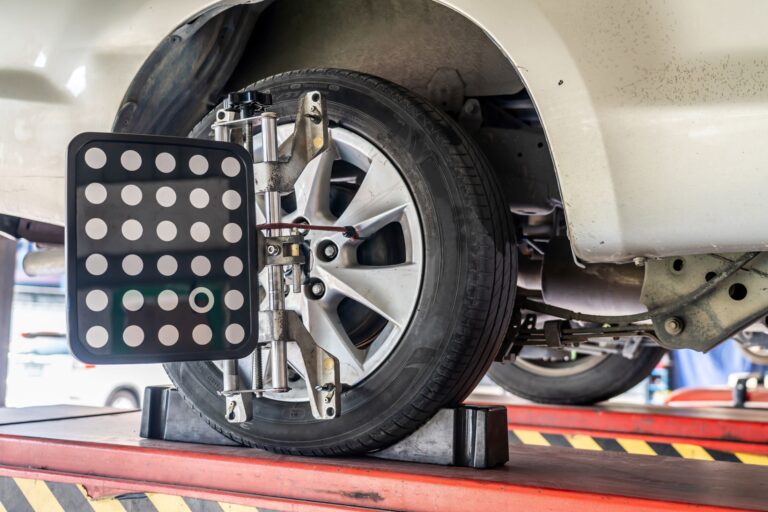Why Wheel Balancing & Alignment Matter
If your car has ever felt like it’s pulling to one side, vibrating at certain speeds, or wearing out tyres unevenly — your wheels might be trying to tell you something. Two of the most overlooked but essential services in tyre care are wheel alignment and wheel balancing. While they sound similar, they serve different purposes and both play a critical role in your driving safety, tyre lifespan, and fuel efficiency. In this post, we’ll explain what they are, how they work, and why they matter more than you think.
What is Wheel Alignment?
Wheel alignment (also called tyre alignment) refers to adjusting the angles of your vehicle’s wheels so they are perfectly in line with the car manufacturer’s specifications. These angles — called camber, caster, and toe — affect how your tyres make contact with the road.
When alignment is off, your tyres may point slightly outward or inward, causing the car to veer to one side, reduce fuel efficiency, and wear out the tyres unevenly. Misalignment can occur gradually or be caused instantly by hitting a pothole, curb, or speed bump too hard.
What is Wheel Balancing?
Wheel balancing ensures that the weight of the wheel-and-tyre unit is evenly distributed around the axle. Even a tiny imbalance — as little as a few grams — can cause noticeable vibration, especially at high speeds. A technician places the wheel on a balancing machine and attaches small weights to correct the imbalance, resulting in a smoother, safer ride.
Unbalanced wheels can lead to uneven tyre wear, steering wheel vibration, and added strain on your suspension system.
Why They Matter
Many drivers ignore these services until they notice something wrong. But regular alignment and balancing have major benefits:
- Increased Tyre Lifespan: Uneven wear caused by misalignment can cut your tyre life in half.
- Better Fuel Economy: Aligned wheels roll more efficiently, meaning your engine doesn’t have to work as hard.
- Improved Handling and Safety: Your car drives straighter, responds better to steering, and brakes more effectively.
- Reduced Vibration and Wear on Suspension: A balanced ride means fewer repairs and less stress on your vehicle over time.
How Often Should You Get It Done?
It’s recommended to check your alignment and balancing every 10,000 to 12,000 kilometers, or if you notice any signs like pulling, vibration, or uneven tyre wear. You should also do it anytime you install new tyres or suspension parts.
Conclusion
Wheel alignment and balancing may not seem urgent — until they are. Keeping your wheels properly aligned and balanced protects your tyres, improves performance, and keeps you safer on the road. It’s a small service with a big impact.
Need an expert to take a look?
📞 Call or 💬 WhatsApp Somekind Limited today and we’ll help you enjoy a smoother, safer ride.




